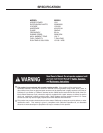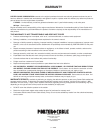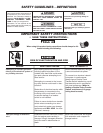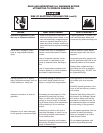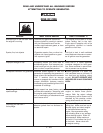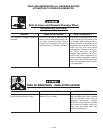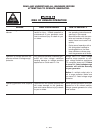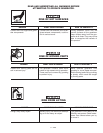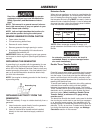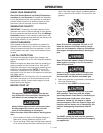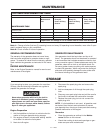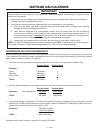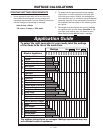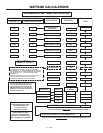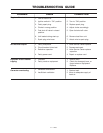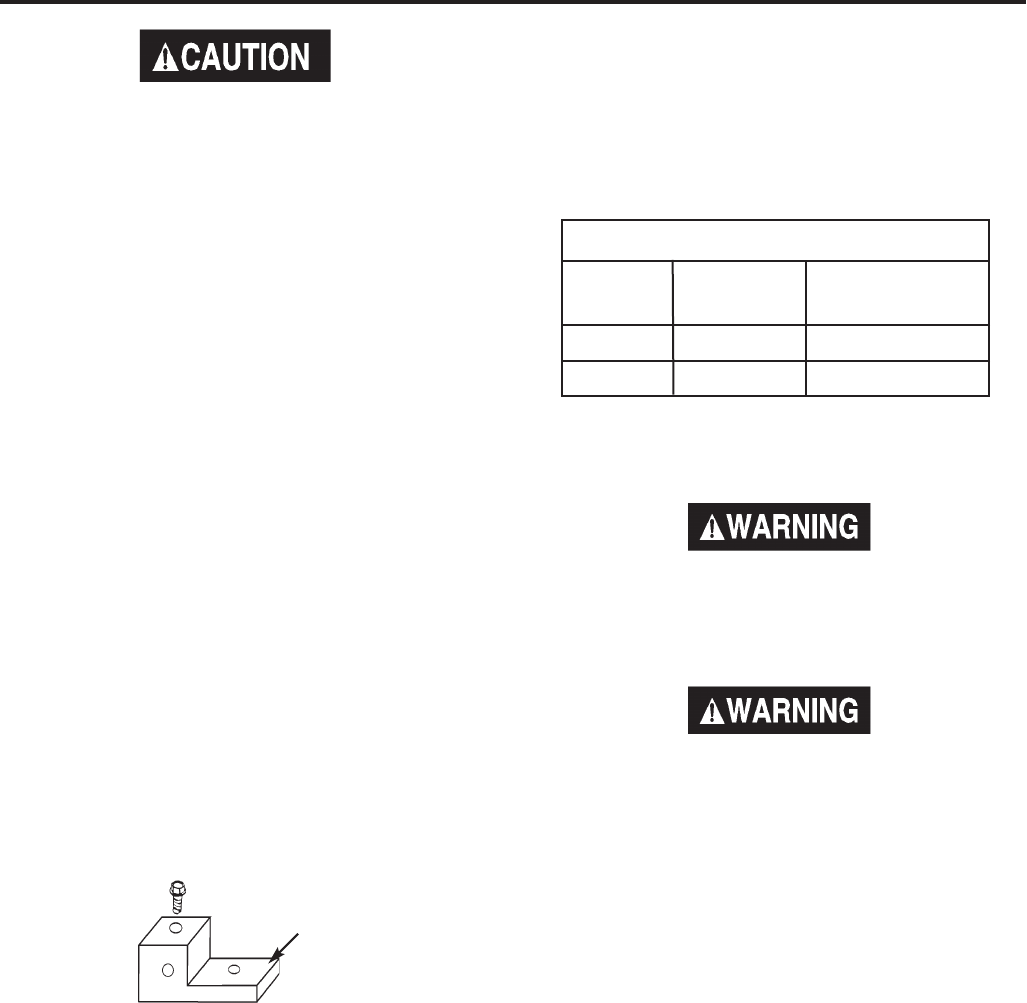
10 — ENG
Extension Cord Wire Gauge Chart
Amperage
*Up to 20 amp draw
Up to 30 amp draw
Cord
Length
0 to 100 ft.
0 to 100 ft.
Wire Gauge
Size
12 ga.
10 ga.
*NOTE: When amperage exceeds 20 amps; a 12
gauge extension cord should not be used for long dis-
tances.
Extension Cords
When using an appliance or tool at a considerable dis-
tance from the generator, a 3-wire extension cord that
has a 3-blade grounding plug and a 3-slot receptacle
that accepts the tool's plug MUST be used in order to
reduce the risk of electrical shock. A cord of adequate
size must be used. Using the following chart to deter-
mine the minimum wire size required.
An extension cord that is hot to the touch is
overloaded. Repair or replace damaged exten-
sion cords immediately.
Double Throw Transfer Switch
Potential hazards exist when a portable electric genera-
tor is connected to the main electrical supply coming
into the house. It is at that point that the electrical gen-
erator could feed back into the utility company's sys-
tem causing possible electrocution of workers who are
repairing the electrical lines.
To avoid back feeding of electricity into utility systems,
a double-throw transfer switch must be installed
between the generator and utility power. The Double-
Throw Transfer Switch should be installed by a licensed
electrician and in compliance with all state and local
electrical codes. (When installing a Double-Throw
Transfer Switch, a minimum of 10 gauge wiring
must be used.)
The electrician should also install a sub-panel to isolate
the circuits you would want to use during an emergen-
cy or electrical power outage. Your generator will not
be large enough to handle the load of all the lights, ap-
pliances, TV, etc. at one time. To select which items to
run during the electrical power outage, see Wattage
Calculation section in this manual.
ASSEMBLY
Read this manual. Do not attempt to operate
equipment until you have read this Manual for
Safety, Operation, and Maintenance Instruc-
tions.
Grounding Lug
OBTAINING ELECTRICITY FROM THE
GENERATOR
There are basically 2 ways to obtain electricity from a
generator:
1. Use of extension cords directly from the generator
to the appliance, lights, tools, etc.
2. Use of a double-throw transfer switch installed
directly to the main electrical supply outside of
house.
NOTE: This manual is a general manual. Informa-
tion in this manual may or may not pertain to your
model. Please read carefully.
NOTE: Left and right describes the location of a
part with the operator facing the outlet panel.
REMOVE GENERATOR FROM CARTON
• Open carton from top.
• Cut carton along dotted lines.
• Remove all carton inserts.
• Remove generator through opening in carton.
• (If equipped) See portability Kit instructions to
assemble the portability kit.
IMPORTANT: Before any attempt to start your genera-
tor be sure to check engine oil (See Engine Operator's
manual)
GROUNDING THE GENERATOR
A grounding lug is supplied with the generator for use
when required by local electrical ordinances. Refer to
article 250 of the National Electrical Code to clarify any
needed grounding information. Your local electric com-
pany or a certified electrician should be able to help
you with this information.
NOTE: Your engine is already grounded to the frame by
a grounding strap.



